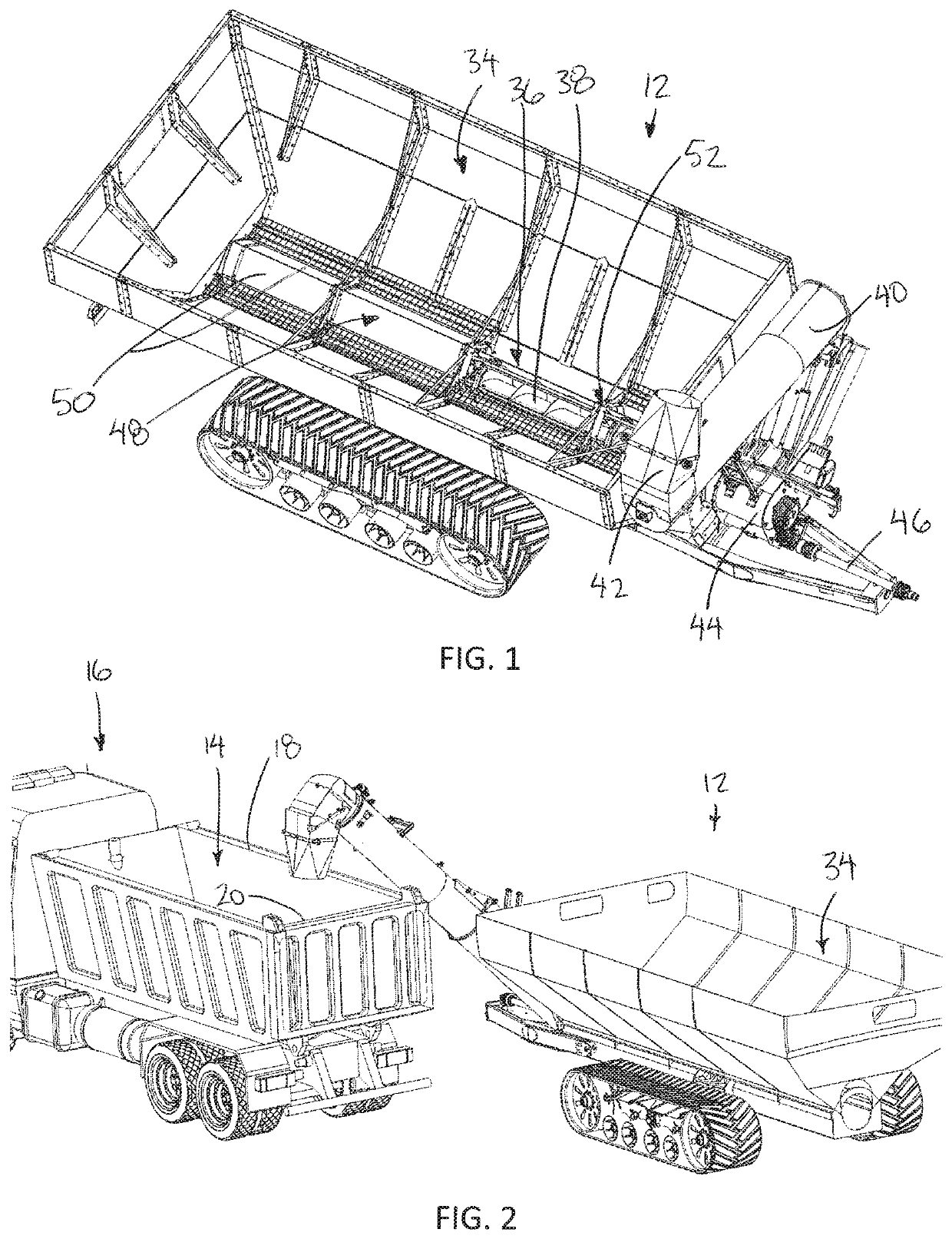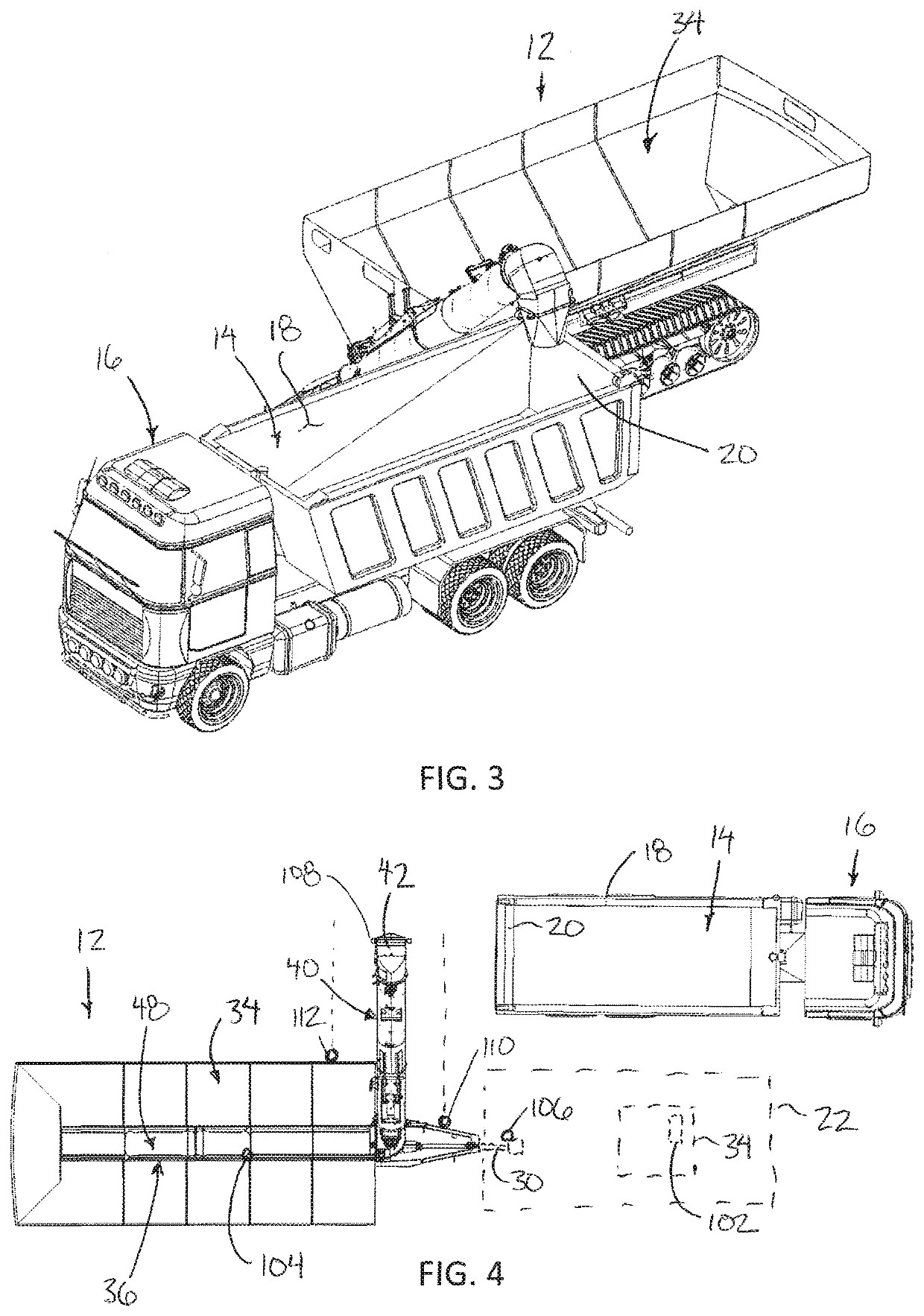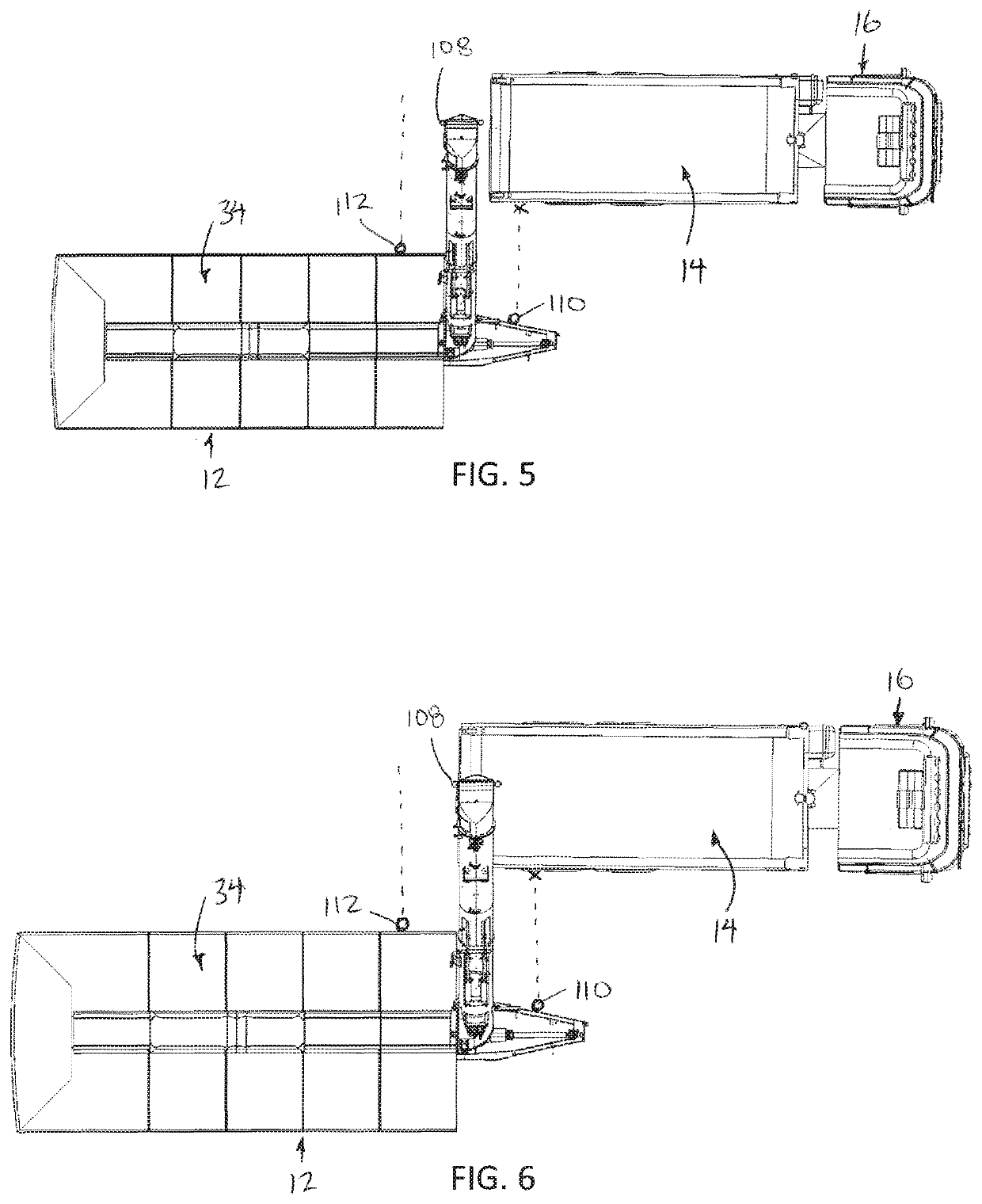Grain cart with automated unloading assistance
a technology of automatic unloading and grain carts, applied in the field of control assembly, can solve the problems of stalling, engine driving ptos, engine power loss, etc., and achieve the effect of avoiding overfilling
- Summary
- Abstract
- Description
- Claims
- Application Information
AI Technical Summary
Benefits of technology
Problems solved by technology
Method used
Image
Examples
Embodiment Construction
[0087]The present invention relates to an automated grain cart gate control system that ensures that the tractor engine running it, does not stall at any time. The system continuously monitors the PTO driveshaft speed and automatically controls the gate of the unloading auger to be able to avoid any tractor stalls. The operator is prompted when the PTO speed drops down to a value deemed unsafe for unloading and the gates automatically close at that point. According to a first mode of operation of the invention, the automatic gate control system uses two or more sensors. To accomplish these items, the following tasks must typically be completed: (i) monitor the power takeoff speed; (ii) monitor the hopper gates position, and (iii) control the hopper gates based on the real-time PTO sensor values.
[0088]Furthermore, the present invention relates to a low-cost intelligent system that would ensure optimum filling of grain from a grain cart into a truck when operated according to a second...
PUM
 Login to View More
Login to View More Abstract
Description
Claims
Application Information
 Login to View More
Login to View More - R&D
- Intellectual Property
- Life Sciences
- Materials
- Tech Scout
- Unparalleled Data Quality
- Higher Quality Content
- 60% Fewer Hallucinations
Browse by: Latest US Patents, China's latest patents, Technical Efficacy Thesaurus, Application Domain, Technology Topic, Popular Technical Reports.
© 2025 PatSnap. All rights reserved.Legal|Privacy policy|Modern Slavery Act Transparency Statement|Sitemap|About US| Contact US: help@patsnap.com



